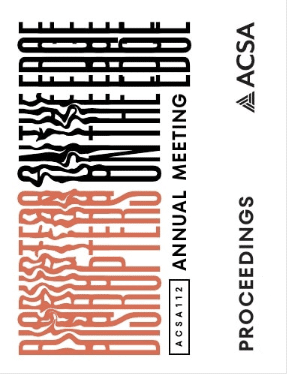Author(s): Lauren A. McQuisition
In the fall of 1982, Dean Jaquelin Robertson of the University of Virginia’s School of Architecture staged a two-day conference on the state of architectural practice. Held in UVA’s Rotunda, the closed-door conference included twenty-four invited architects. The group, although ideologically diverse, was notably entirely male and overwhelmingly Euro-American. Those in attendance included established and emerging architects Philip Johnson, Paul Rudolph, Tadao Ando, Peter Eisenman, Robert Stern, Michael Graves, Frank Gehry, and Rem Koolhaas among others. Organized much like a studio review, each architect presented a single, unpublished project which was then critiqued and debated by the group. The full transcript of the proceedings, was later published by Rizzoli. The Charlottesville Tapes, was intended as the first in a recurring series of conferences and publications of “architects on architecture” emphasizing the role of designers, rather than critics, historians, or journalists in establishing the discourse of contemporary practice. Organized at a critical moment in the early 1980s, the discipline was caught between competing claims and shifting ideological viewpoints on innovation and tradition, history and theory, and modern and post-modern aesthetics. Rather than resolve these tensions, the event intended to explore the pluralistic state of contemporary practice through a series of open debates, a democratic format, further reinforced by the auspicious setting of Thomas Jefferson’ Academical Village. Frequently referenced as an early moment of recognition for the younger generation of invited architects, many of the conference’s participants later served in prominent leadership roles in practice and academia, receiving international recognition for their work. As a result, the conference has had lasting repercussions for architectural practice and pedagogy, particularly in the US context.
https://doi.org/10.35483/ACSA.AM.112.48
Volume Editors
Germane Barnes & Blair Satterfield
ISBN
978-1-944214-45-6

 Study Architecture
Study Architecture  ProPEL
ProPEL 
